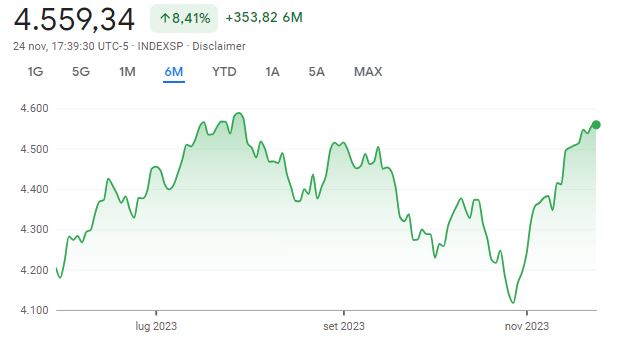"In the United States, in fact, multiples remain at sustained levels with the SP500's price-to-earnings ratio for next year at 19x, meaning analysts are treating U.S. stocks 19 times average 2023 earnings expectations. This valuation is impacted by the particularly high multiples of some tech stocks, which have been the protagonists of strong growth this year," Cominotto continues.
Europe, however, remains cheaper than the United States, with valuations around 12x. More specifically - according to the expert - Italy appears to have particularly attractive valuations, with a P/E ratio of around 8x. These values, combined with the fact that expectations on global earnings growth for next year are on average above 5 percent, lead us not to identify any particular criticality regarding current multiples.
To analyze the outlook for the bond market, it is necessary to take a step back and advance a reflection on rates. The latest consumer price data in Europe were rather comforting: in October the CPI came out below expectations at 2.9 percent. And the European economy is showing signs of difficulty. "For these reasons investors are increasingly convinced that the peak on rates has been reached and that over the next year we will see the first cuts," explains Paolo Baldessari, Head of Fixed Income & Alternative Investments at Banca Generali. "Money market curves discount as many as four 0.25 percent declines, concentrated in the second half of 2024. Some analysts go so far as to speculate that the ECB could move even earlier, cutting rates before the Fed, an event that has never happened in the history of the European central bank."
Of this particularly positive environment for European rates, the main beneficiaries have been Italian government bonds, which have also cashed in on an unexpected promotion from Moody's. Following S&P and Fitch, which reaffirmed the rating at BBB in November, Moody's changed the outlook on our debt from negative to stable, warding off the risk of a speculative downgrade. "Icing on the cake for investors in BTPs, the Italian Treasury announced that it had cancelled several auctions in November and December, thanks to good revenue performance and success in retail bond placements," the manager continues. "The auction calendar for 2024, on the other hand, will be challenging: with 10 percent of the debt stock maturing in the next 12 months, analysts estimate that net new issuance volumes will be around €100 billion. However, the average maturity of Italian debt is among the longest among European bonds (> 8 years) and the average coupon paid on the entire stock of Btp, today 2.8 percent, is just above the historical minimum touched in 2022 (2.5 percent)," the expert concludes.
In light of this volatility, the advice is to be wary of the temptation to DIY and to rely on the experience and expertise of seasoned professionals. The risk of concentration and market reversal with these geopolitical variables is always just around the corner, and the golden rule remains that of conscious diversification, which together with an experienced advisor is a good compass for navigating these complex market conditions.
 Corrado Cominotto, Head of Active Asset Management at Banca Generali
Corrado Cominotto, Head of Active Asset Management at Banca Generali


 Paolo Baldessari, Head of Fixed Income & Alternative Investments at Banca Generali
Paolo Baldessari, Head of Fixed Income & Alternative Investments at Banca Generali
/original/Testo+del+paragrafo+%2825%29.png)

